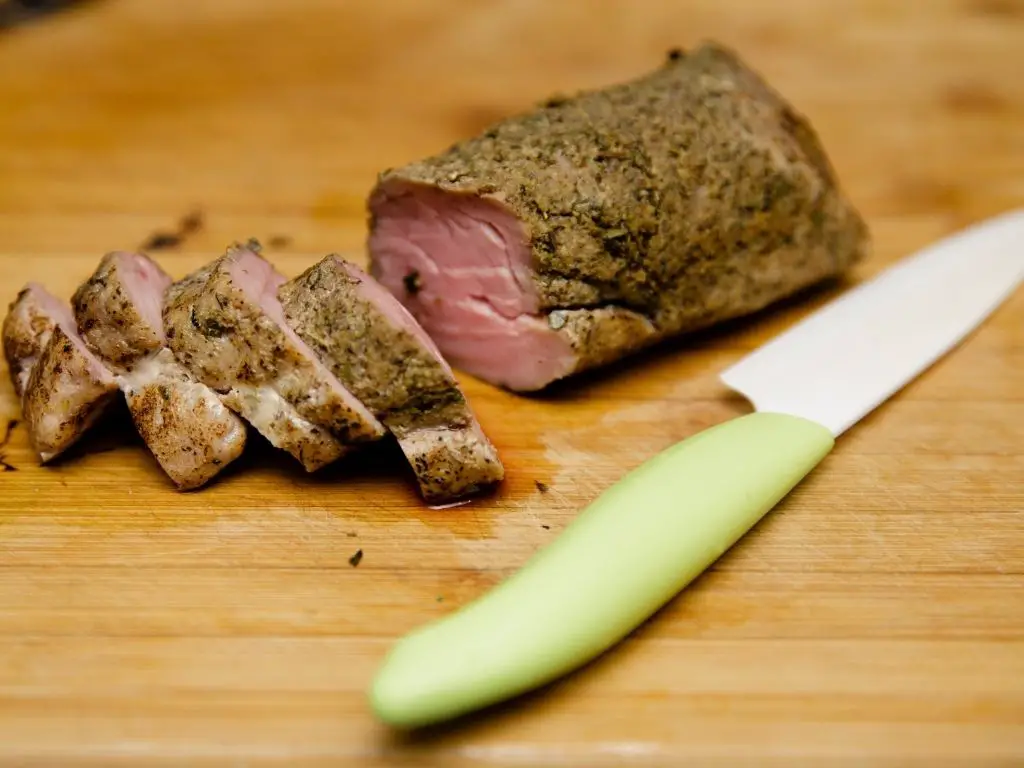Sous vide and pressure cooking are two modern cooking techniques that are growing in popularity among home cooks. Both methods involve cooking food in an enclosed environment, but they utilize different core principles to achieve different results. Understanding the key differences between sous vide and pressure cooking can help you determine when to use each technique.

Sous Vide Products I Use Every Day
As an Amazon affiliate, I earn from qualifying purchases.
Last update on 2025-03-03 / Affiliate links / Images from Amazon Product Advertising API
Temperature Control in Sous Vide vs. Pressure Cooking
The core principle behind sous vide cooking is precision temperature control. Food is vacuum sealed in plastic and then cooked slowly in a precisely temperature-controlled water bath. This allows food to be heated evenly from edge to edge without overcooking. Low temperature cooking at 130-140°F is commonly used for meat to break down connective tissue while retaining moisture. Higher temperatures up to 185°F can be used for vegetables. The key benefit is perfect temperature control for consistent results.
Pressure cooking utilizes high pressure steam to cook food rapidly. A sealed pot allows pressure to build up internally, raising the boiling point of water far above 100°C. This transfers heat quickly and intensely to food. While pressure cookers have improved with more accurate pressure regulators, they do not offer the same level of precision temperature control as sous vide.
Time Required for Sous Vide vs. Pressure Cooking
Cooking times are markedly different between the two methods. Sous vide cooking times are typically much longer due to the lower temperatures used. Tough cuts of meat can cook for anywhere from 1-3 hours before becoming fork tender and juicy. The extended cooking develops complex flavors and tenderizes connective tissues. In contrast, pressure cooking is fast, with most foods cooking in under an hour. The high heat rapidly breaks down fibers in meat and softens vegetables. However, extended cooking is not possible due to the risk of overcooking.
Flavor and Texture in Sous Vide vs. Pressure Cooking
Sous vide’s low and slow approach results in a silky texture and pronounced, concentrated flavors in meats and vegetables. The moderate temperatures gently coax collagen into gelatin. Meat comes out incredibly juicy and tender. Vegetables soften but retain their natural colors and flavors. Gentle cooking prevents food from becoming overly soft or stringy.
Rapid pressure cooking can sometimes give vegetables a mushier, overcooked texture if not timed properly. However, meats develop a similar fall-apart tenderness as sous vide while also extracting flavors from bones and aromatics cooked in the pot. Overall, both methods can yield delicious flavor when done right. Pressure cooking just requires closer monitoring.
Nutrient Retention in Sous Vide vs. Pressure Cooking
Both sous vide and pressure cooking retain more nutrients compared to traditional cooking methods. Sous vide’s gentle heat minimizes the breakdown of cell structures. Vitamins and minerals are largely retained in the sealed bags. However, some water-soluble vitamins can leach out. With pressure cooking, the high heat and steam can destroy some heat-sensitive nutrients, but the rapid cooking better preserves other nutrients that oxidize when cooking for longer periods. Both methods yield healthier outcomes versus boiling or high-heat pan frying.
Ease of Use and Convenience in Sous Vide vs. Pressure Cooking
Sous vide requires more active hands-on time upfront to vacuum seal foods, but then takes care of itself using automated precision temperature control. Pressure cookers take less prep work, but need careful monitoring to bring the pot up to pressure and ensure accurate timing. Sous vide’s gentler approach also gives more flexibility and forgiveness compared to pressure cooking. Overall, both can offer convenience in the kitchen, with sous vide excelling for uncomplicated batch cooking.
In summary, sous vide and pressure cooking both have merits depending on the needs:
- Sous vide excels when precise control, tender texture, and concentrated flavor are priorities.
- Pressure cooking is ideal when speed is paramount without compromising on flavor.
The methods can certainly complement each other. Tough cuts of meat can be rapidly pressure cooked to tenderness, then finished with brief sous vide heating to enhance juiciness. Alternatively, quick-cooking foods like fish and vegetables can develop sublime textures using sous vide alone. Regardless of preferred method, both sous vide and pressure cooking are excellent additions to the modern home cook’s kitchen arsenal.


![IMPRESA [10 Pack] Sous Vide Magnet Weights for Keeping Bags Submerged – Sous Vide Accessories to Stop Floating Bags & Undercooking – Weighted Magnets for Containers](https://m.media-amazon.com/images/I/41zHpl8G2lL._SL160_.jpg)

